Last Chance to Catch NYC's Holiday Notalgia Train
We met the voices of the NYC subway on our nostalgia ride this weekend!


Along the waterfront of Staten Island’s eastern shore, Bayley-Seton Hospital, is an imposing facility. It’s creepiness validated by Hollywood, which has used the main seven-story building as the setting for Arkham Asylum on the show Gotham. Built in 1931, this building houses Richmond University Medical Center-Bayley-Seton Hospital, but is not by far the oldest structure on the property. In fact, two landmarked structures from the pre-Civil War period sit abandoned in the shadows of this building.
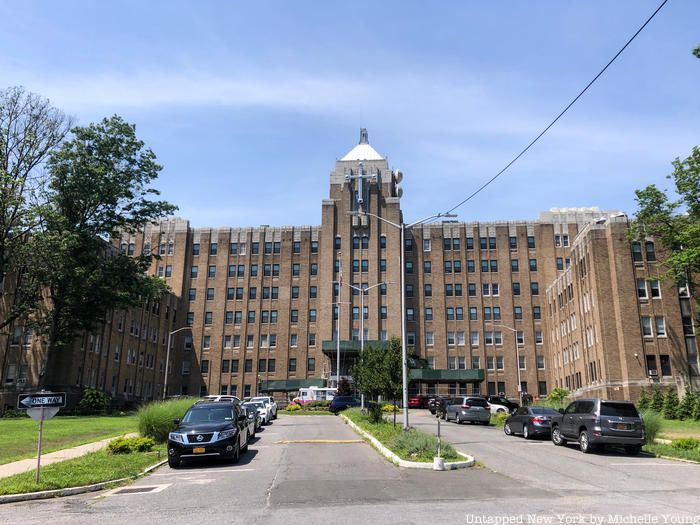
The main building at Richmond University Medical Center-Bayley-Seton Hospital, built in the 1930s, currently still in operation
In the 1930s, Franklin Delano Roosevelt created public hospitals across the United States, of which Bayley-Seton was one. But the history of medicine at this site on Staten Island dates far before these 20th century efforts. Known originally as the Seaman’s Retreat, this site was one of two locations created for the recuperation of returning merchant seamen. The 36-acre parcel of land was purchased from the Cornelius Corson family, which had a farm here.
Both this and the other facility at Sailors’ Snug Harbor opened in the 1830s — the Seaman’s Retreat in 1831 and Snug Harbor in 1833. While Snug Harbor was predominantly a retirement home for the merchant seamen, the Seaman’s Retreat was a medical facility and was in fact, Staten Island’s first hospital.
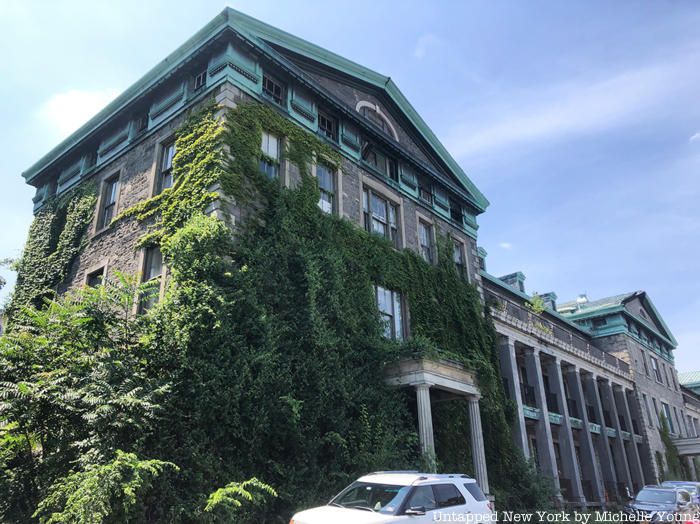
According to the New York City Landmarks Preservation Commission, the two sites on Staten Island were thought ideal due to the panoramic views of New York harbor and close accessibility to Manhattan. Their creation was a New York State initiative, made possible through the bill “An Act to Provide for Sick and Disabled Seamen” in the New York State legislature, intended to address the shortfall in care offered by the more decentralized policies and facilities of the federal government. Shirley Zavin, writing for the Landmarks Preservation Commission, states that “For most of its history, Seaman’s Retreat was the only hospital of the Port of New York devoted solely to the care of merchant seaman.”
The hospital was funded through a tax on port of entry tax on all seamen, which was established in 1797. Zavin writes that this was “in effect the country’s first pre-paid health-care plan.” The Seaman’s Retreat would not be acquired by the federal government until 1903, and Zavin contends that by this time, the hospital was “the largest of the more than twenty U.S. Marine Hospitals then in operation, a status it retained for the duration of its existence.”
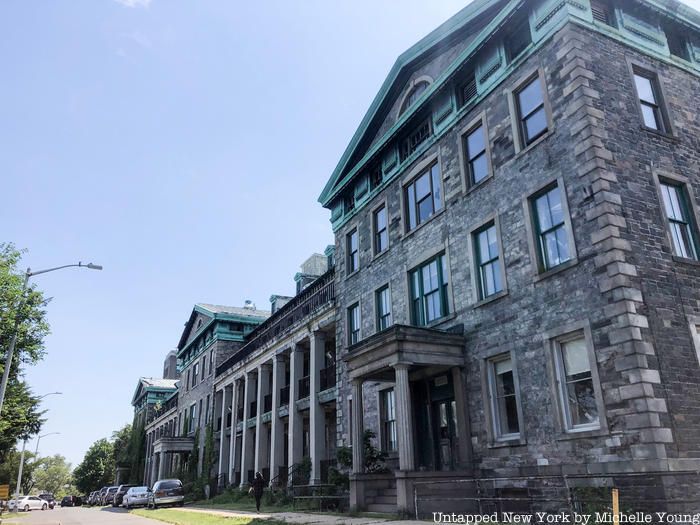
As a side note, until the opening of the Seaman’s Retreat, the seamen’s tax funded a quarantine station that was first located on Bedloe’s Island (now Liberty Island), then relocated to Staten Island. The quarantine station on Staten Island would be moved onto a man-man island, Swinburne Island, following repeated attacks by angry mobs who feared potential diseases they believed would be brought by newly arrived immigrants.
The main building of the Seaman’s Retreat, one of two structures that remain of the original facility, was built from 1834 to 1837. The design was similar to other hospitals built in this era. The central two and a half story colonnade portions of the building were used for patient wards and contained outdoor balconies for access to fresh air. The building also has three, three-story pavilions, which contained offices, treatment rooms, and staff quarters. The two pavilion on the ends of the building were added later in 1848 and 1853, as demand increased for admissions. The hospital could fit up to 200 patients, but operated at a capacity of 143. It is estimated that hundreds of thousands of seamen passed through these doors for care over its nearly 150 year history.
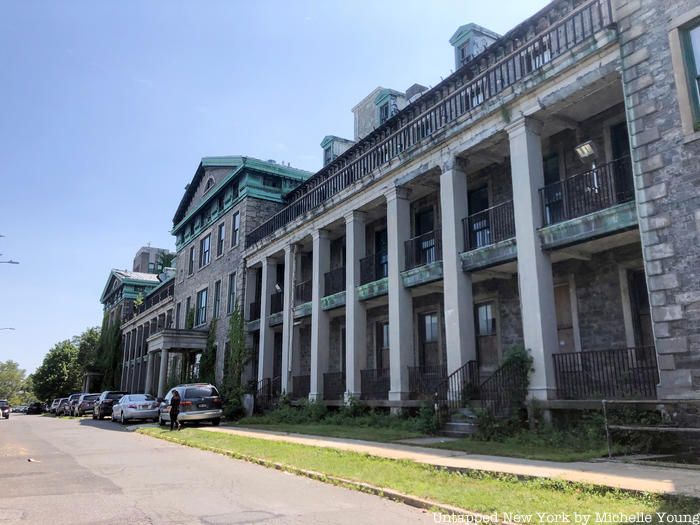
The Seaman’s Retreat was closed in 1981, when the United States Public Health Service Hospitals system was terminated. The agency was formed in 1789 specifically for the care of merchant seamen, and although it came to encompass much more, seamen were 21% of the patients still when the system folded. The hospital complex, which by then included the 7-story building, was transferred to the ownership of the Sisters of Charity of St. Vincent de Paul, which explains the large cross at the pavilion that tops the building.
The hospital’s name, Bayley-Seton Hospital, is in honor of the first native-born saint in the United States, Elizabeth Ann Seton, who was a native New Yorker. (You can visit her shrine, located on the site of her former home on State Street in Lower Manhattan). The building today houses mental health services and treatments for chemical dependencies, according to the hospital’s website.
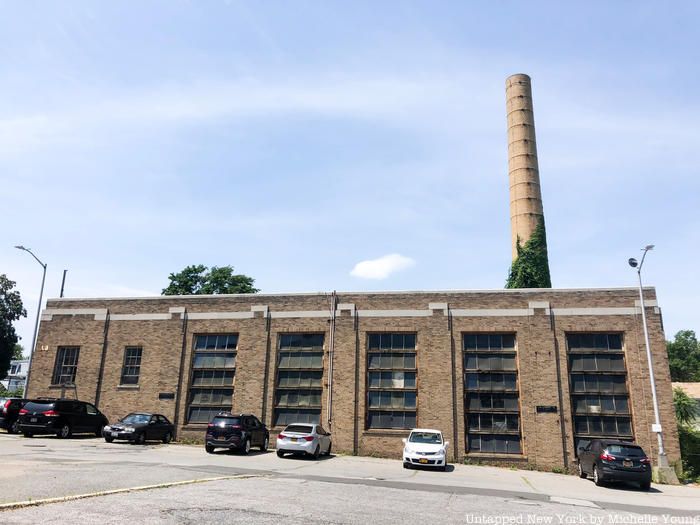
An old power plant at Bayley-Seton Hospital
Several additional buildings, which were built in the FDR era and included nurses housing and an administrative building, passed hands multiple times, finally to the Salvation Army which failed to fundraise the amount needed to redevelop the site into a community center. Twelve foot chain link fences had been placed along the perimeter of the seven-acre Salvation Army property for many years until that portion of the site was demolished in late 2018. When this aerial video was made in summer 2018, that eastern portion of the property was still standing, but by November that year it was gone.
As for the main colonnade building of the Seaman’s Retreat, it still stands due to its landmark status, though the area around is is mostly used for car parking. There are wooden boards on many of the windows, with others cinderblocked up. In the warmer months, ivy almost completely covers the southern pavilion. Yet, the quality of the construction and materials speaks to the building’s relatively decent exterior condition — the granite ashlar material remains completely intact (albeit in need of a power washing). The copper pediment and frieze that frame the top of the pavilions and the dormer windows have protected the upper structures. A separate landmarked building, the Physician in Chief’s residence also still stands just around the corner from the northern pavilion.
It is unclear what is next for this portion of the property or the buildings that were part of the Seaman’s Retreat, but hopefully something that is appropriate to the illustrious history of the site and renews the former buildings to their original state.
Next, check out 10 abandoned places on Staten Island.
Subscribe to our newsletter